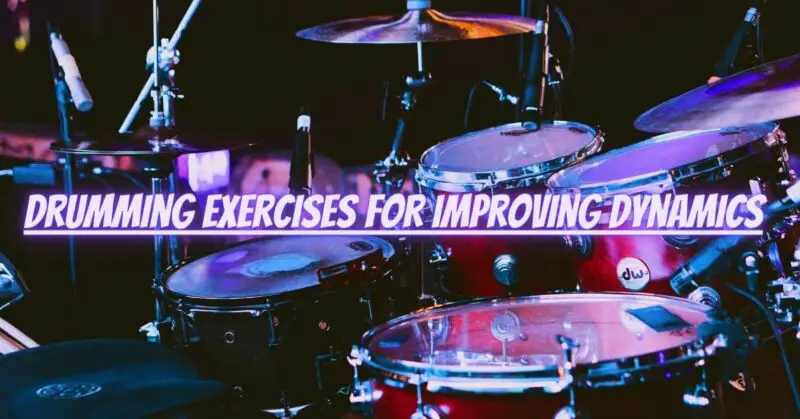Dynamics play a crucial role in drumming, allowing drummers to convey emotion, enhance musicality, and add depth to their performances. Developing control over dynamics is essential for creating a captivating and expressive drumming style. In this article, we will explore effective drumming exercises specifically designed to improve your understanding and execution of dynamics, helping you become a more versatile and expressive drummer.
- Accent Control: a. Begin by practicing accent exercises. Focus on playing accents on specific beats or within patterns, while keeping the non-accented notes at a consistent volume. b. Experiment with different accent patterns, such as accenting the downbeat, upbeat, or specific subdivisions. Gradually increase the tempo as you gain proficiency.
- Ghost Notes: a. Practice incorporating ghost notes into your drumming. Ghost notes are soft, subtle drum hits that provide rhythmic texture and enhance groove. b. Start by playing simple patterns and gradually incorporate ghost notes between accented notes. Pay attention to maintaining a consistent volume for ghost notes while accentuating the accented notes.
- Dynamic Rolls: a. Focus on executing rolls with dynamic control. Start by playing slow rolls, gradually increasing the speed while maintaining evenness and control. b. Experiment with crescendos (increasing volume) and diminuendos (decreasing volume) within the rolls, creating a sense of tension and release.
- Sticking Techniques: a. Explore different sticking techniques, such as rimshots, cross-sticking, and playing on different areas of the drumhead to achieve varying dynamics. b. Practice exercises that involve alternating between different sticking techniques within patterns or grooves. This will help you develop precision and control over dynamic variations.
- Dynamic Fills: a. Incorporate dynamic variations into your drum fills. Start with simple fills and gradually introduce dynamic contrasts, such as starting softly and building up to a strong climax or vice versa. b. Experiment with different subdivisions and accents within your fills, accentuating certain beats or notes for added impact.
- Tempo Control: a. Focus on maintaining consistent dynamics as you play at different tempos. Practice playing patterns or grooves at slow, medium, and fast tempos while keeping the volume and intensity consistent. b. Pay attention to maintaining control and precision, ensuring that the dynamics remain consistent and intentional throughout the varying tempos.
- Dynamics with Cymbals: a. Explore dynamic variations with cymbal playing. Experiment with different techniques, such as varying degrees of crashing, riding, or using mallets to achieve varying dynamics. b. Practice playing cymbal swells, where you gradually increase or decrease the volume and intensity of the cymbal sound.
- Record and Evaluate: a. Use a recording device or software to record your practice sessions. Listen back to your recordings and evaluate your dynamics. Identify areas for improvement and focus on refining those aspects.
- Play Along with Music: a. Select songs or drum tracks with varying dynamics and play along. Pay close attention to how the drummers on the recordings use dynamics to enhance the music. b. Aim to replicate the dynamic nuances of the original performances while adding your own interpretations.
Conclusion: Improving dynamics in drumming requires focus, control, and musical sensitivity. By practicing accent control, incorporating ghost notes, exploring dynamic rolls, experimenting with different sticking techniques, incorporating dynamic variations in fills, mastering tempo control, working on cymbal dynamics, recording and evaluating your playing, and playing along with music, you can enhance your drumming dynamics and elevate your musical expression. Remember to start with simple exercises and gradually progress to more complex patterns and musical contexts. With consistent practice and attention to detail, you’ll develop a wide range of dynamics that allow you to create captivating and expressive drumming performances.

